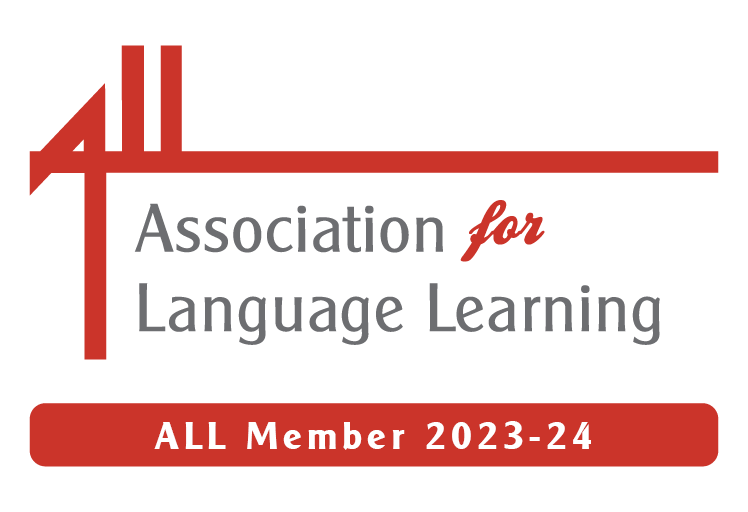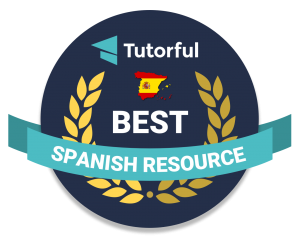I’ve just found this lovely clip on BBC Learning Zone yesterday. Funny and good for daily routine in Spanish. There are also Not now Farley episodes for weather, pets, food and clothes. And they’re also available in French and Mandarin!
¡Vámonos!
 Yes, it’s another Barcelona post but nothing to do with football – promise!
Yes, it’s another Barcelona post but nothing to do with football – promise!
Last week when I was in Barcelona on a Comenius Regio visit, my colleague Jane and I hared around numerous sites in the city, collecting resources.
 One place we visited was the Zoo de Barcelona. Are all zoos the same, we wondered? Well, no! Whilst there were plenty of animals in common, this was nothing like Twycross (our local zoo) You could get very close to the animals (a little too close we felt in some cases – aren’t hippos and rhinos rather dangerous animals to be kept in enclosures with 2 foot high walls) and the information was in three languages – Catalan, Castillian (Spanish) and English. Hence I pootled around happily snapping signs to the amusement of anyone who saw me, ready for comparison of languages activities, guessing games and reading activities.
One place we visited was the Zoo de Barcelona. Are all zoos the same, we wondered? Well, no! Whilst there were plenty of animals in common, this was nothing like Twycross (our local zoo) You could get very close to the animals (a little too close we felt in some cases – aren’t hippos and rhinos rather dangerous animals to be kept in enclosures with 2 foot high walls) and the information was in three languages – Catalan, Castillian (Spanish) and English. Hence I pootled around happily snapping signs to the amusement of anyone who saw me, ready for comparison of languages activities, guessing games and reading activities.
 I also took plenty of animals pictures to fit into our creative learning journeys – Are you my Mummy? The Circle of Life. Big teeth. A walk on the wildside. The Blue Planet. And more. It’s amazing how many links you can come up with when faced with a near empty zoo and armed with a camera and a creative thinking colleague to ‘bounce’ off. We tried to get some footage/ images for Down Under but the kangaroos were uncooperative, lying on their backs in the sun and refusing to hop.
I also took plenty of animals pictures to fit into our creative learning journeys – Are you my Mummy? The Circle of Life. Big teeth. A walk on the wildside. The Blue Planet. And more. It’s amazing how many links you can come up with when faced with a near empty zoo and armed with a camera and a creative thinking colleague to ‘bounce’ off. We tried to get some footage/ images for Down Under but the kangaroos were uncooperative, lying on their backs in the sun and refusing to hop.
Anyhow, I’ve been thinking about these ideas and will be collecting the many pictures into folders and writing up some ideas for colleagues as well as giving them the opportunity to think for themselves given the footage and photos. And I had a look at the website to see what I could find.

Like the Zoo, it is tri-lingual and I LOVE IT! At last I’ve found a site in Spanish to rival the French Zoo Palmyre
There’s an interactive map that allows you to click on an animal silhouette and discover photos and information about that animal – scientific classification, habitat, how endangered it is and also a lovely chunk of writing about the animal too. And it’s all available in the three languages – great for Spanish teaching but also good so that the non-specialist who wants to use the Spanish version has a ‘safety net’ ;o)
Then there’s the Espacio Lúdico or recreational area where there are some fun games. One involves solving clues to find out to which animal the pawprints belong. Simple sentences that can be decoded with minimum help and a bit of previous knowledge of animals perhaps! And so easy to use in non discrete language lessons – which had be jumping up and down excitedly!
Other sections caught my attention such as the zoo rules, the history of the zoo and even the map of how to get there and the price list. Some people say I have a one track mind and never switch off from learning mode – I guess I do! And it doesn’t bother me much to be honest! If only there were enough hours in the day to explore all the ideas that come to mind in a place like that!
As we work on our ideas at school, I’ll try to share as many as I can here.
I’ll leave you with Copito de Nieve (Floquet / Snowflake), for many, the (sadly deceased) face of Barcelona Zoo. A powerful image and thought.
Yes, I’ve been to IKEA again in search of a blind and more inspiration in the form of squishy things!
You’d think I’d bought up the whole shop by now but I did purchase this set of farm animals.
How might I use them?
Well, I’ve thought of the following-
a) colours –
Busco algo negro.
Busco un animal de color rosa.
¿De qué color es la vaca?
¿El cisne es amarillo?
b) size/shape
Busco algo negro y pequeño.
Busco algo blanco con un cuello largo.
Althernatively, you could give half the information and the pupils to ask for more information.
Busco algo grande. > ¿Es negro?
No, es marrón y blanca. > Es la vaca
c) a song (there’s always a song involved isn’t there!)
El granjero tiene una granja or En la granja de mi tío or En la granja de Pepito or whichever version you sing would work well!
d)looking at names of baby animals –
una oveja – un cordero
una vaca – un ternero
un cerdo – un cerdito
leading into the use of -ito to mean little (cf un pollo – un pollito)
(btw – if you fancy a giggle, have a look at this for finding out how to say little baby cow in different languages!)
e) storytelling
Una vez había un grupo de animales en una granja había una vaca y su ternero, un cerdo y sus tres cerditos, una oveja y su cordero negro y un cisne. Su vida era perfecta aparte de una cosa… en la granja también había un toro gruñón..
I’ll leave you to finish off the story!
So, there’s a few ideas. Perhaps you could add your own in the comments below?
PS I was very taken with these wonderful large squashy fruit and vegetables. I resisted the temptation to buy them though!
TeachMeet WM Languages – 7 minutes presentation

Flickr CC by jurvetson
Supporting the ‘less confident‘ is the theme of my 7 minute presentation.
Some ideas I may or may not throw out there!
1. embed sound in presentations
eg El granjero tiene una granja
2. make sound files – and encourage their use
eg BGFL website
3.have ‘expert’ pupils who you train to support
4.point out ways of teaching languages that are less stressful
eg Ideas for support and embedding of language learning by class teachers
5.use websites to ‘present’ things
eg Babelzone; LanguageNut; BBC Primary Languages site; Lingo Show; favourite games
As I’m full of cold I may be more random than normal so this is just a guide ;o)
A lovely song / rhyme about a little bear playing hide and seek. Not the best singer ever but a sweet song!
[vimeo http://www.vimeo.com/19335416 w=400&h=300]
 Thanks to a lovely FLA (foreign language assistant) who attended my course yesterday I’ve discovered Semillitas de Aprendizaje. And I love it!
Thanks to a lovely FLA (foreign language assistant) who attended my course yesterday I’ve discovered Semillitas de Aprendizaje. And I love it!
Semillitas de aprendizaje (little seeds of learning) is part of RiF (Reading is Fundamental), a non profit organisation with the aim of nurturing a love of books and a rise in literacy across America.
OUR VISION:
Our vision is a literate America in which all children have access to books and discover the joys and value of reading.OUR MISSION:
To motivate young children to read by working with them, their parents, and community members to make reading a fun and beneficial part of everyday life. RIF’s highest priority is reaching underserved children from birth to age 8.
Semillitas de aprendizaje is a bilingual site – in English and Spanish – aimed at children 0-5 years old and their parents. It’s full of games, stories, songs, rhymes and activities in two sections – 0-36 meses and 3-5 años.
Favourites so far include
Explorar where you can find out about animals in short clips with simple notes down the side
Juegos digitales which doesn’t mean digital games but finger rhymes! Particularly like the fact that the girl presenting them isn’t a’professional’ singer – much more appealing. My favourite is Las ruedas en el bus.
Cuentos – some very simple stories – particularly like La mascota perfecta (link to Querido Zoo?) and No me quiero bañar – a common cry in many homes!
Rimas infantiles is also a great section with lots of rhymes – and they’re read to you so you get the right rhythm which can be a bit of a problem.
Some lovely things to see and do on the site – also has pictures to download and colour (love the animals!)
And the adults section gives advice on good books, activities that you can do with your children and also general advice.
So, thanks for the tip off! I love it when other people share things with me!
 This week sees the launch of a really lovely offering on the CBeebies website aimed at 4-6s – and I’m very excited that I’ve been involved in it (along with many others!)
This week sees the launch of a really lovely offering on the CBeebies website aimed at 4-6s – and I’m very excited that I’ve been involved in it (along with many others!)
As the blurb from the BBC says –
‘The Lingo Show’ introduces different languages to a pre-school audience, sprinkled with a bit of culture. Play fun games and learn new words whilst helping ‘Lingo’ the ultimate show bug and his performing bug friends prepare for the ‘Big Bug Show’. Featuring French, Spanish, Mandarin, Welsh, Urdu, Punjabi, Somali and Polish. It’s a bug-lingual adventure!’
This week the site is launched with French, Spanish and Mandarin to be followed by Welsh on St David’s Day, Urdu and Punjabi on 14th March and Somali and Polish on 28th March.
I am really excited that the site is finally live and hope that it is enjoyed as much by the users as it was by the four children in Reception on whom I tested it in its early stages. And I look forward to seeing what may happen to Lingo, Queso, Jargonaise, Wei and the other bugs in the future!
 At the MFL Show and Tell on Saturday night, I shared this song from the UpToTen website.
At the MFL Show and Tell on Saturday night, I shared this song from the UpToTen website.
It’s a very simple song that can easily be adapted to include any animal – or noun in fact! – and any verb.
For example –
Peux-tu marcher comme un éléphant?
Peux-tu sauter comme un robot?
Peux-tu manger comme un dinosaure?
I’ve captured the song from the site here in case you can’t get online – Peux-tu marcher comme un canard
 Today a new part of the Birmingham Grid for Learning (BGfL) website was launched. After a long wait, the Birmingham Primary Language (BPL) website was unveiled.
Today a new part of the Birmingham Grid for Learning (BGfL) website was launched. After a long wait, the Birmingham Primary Language (BPL) website was unveiled.
Offering sections of guidance, useful weblinks, documentation and training opportunities for coordinators and class teachers as well as a growing bank of downloadable resources including sound files, there’s plenty to investigate. The site is in its infancy but will hopefully grow and grow, especially if the Primary Language teachers of Birmingham volunteer resources and ideas to add to the bank.
 Lisibo’s been shopping again. This time, though, it’s not IKEA that has inspired her but TK Maxx that has come up trumps.
Lisibo’s been shopping again. This time, though, it’s not IKEA that has inspired her but TK Maxx that has come up trumps.
In the sale (!) I found this Very Hungry Caterpillar felt set.
- telling the story to the class
- getting pupils to follow the story actively by adding / moving/ substituting the felt pieces
- animating – and because it’s a felt board, you can do it horizontally or vertically
- small group work
- independent play
Sad that Year 3 have finished with that story for the year and we’ll have to wait until next September to ry it out with them. perhaps it’s time I invaded Foundation stage again…
The Hungry Caterpillar is a great story to use with kids as it’s familiar and repetitive. The vocabulary is simple and everyday – numbers, colours, food – and it looks at healthy eating as well as the life cycle of the caterpillar / butterfly, so very cross curricular!
There are great resources all over the place for this story including
- videos on Youtube – one two three
- a whole series of lessons here
- a page full of ideas here
- a lovely song here – with music file too
- a powerpoint of the story in Spanish
- a PDF of a teaching sequence including cross curricular links
- another PDF with ideas and the pattern for a caterpillar mobile
- some art / craft activities to do with butterflies and caterpillars
And that’s just gleaned from a quick Google search!
¡Vámonos! ©2025. All Rights Reserved.
Powered by WordPress.
Theme by Phoenix Web Solutions







